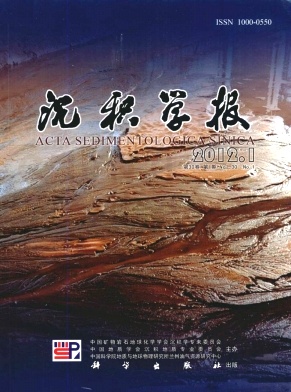Sedimentary Petrology and Geochemistry of Permian Triassic Carbonate Mounds in LongStone Mountain in Bayan Har Basin
- Publish Date: 2012-02-10
Abstract: The Bayan Har sedimentary basin has been a hotspot and key area in studying QinghaiTibet Plateau geotectonics and Tethys, which is located in the northeast of QinghaiTibet Plateau hinderland. The domination sedimention of Bayan Har basin which has some different sizes of limestone platforms or limestone mounds are composed of Triassic turbidite rocks. In this paper, we study the sedimentary environment of hummocky limestone by the way of sedimentary petrology and geochemistry. Samples of this paper were collected from four isolated carbonate mounds on Long Stone Mountain of Bayan Har Basin, Qinghai province, which was developed in the Permian Triassic Maerzheng Formation strata with Ammonoid that produced a dark gray thinbedded micritic limestone and grayblack slate. XRD analysis showed that the average calcite content of hummocky limestone from Permian Triassic strata of Long Stone Mountain of Bayan Har Basin is up to 97%. Major element analysis showed that the CaO average content of hummocky limestone is up to 53.38%, so the CaO content is close to the theoretical value of calcite 56.03%, while Al2O3, Fe2O3, K2O, MgO, MnO, Na2O, P2O5, TiO2 and others content are below 5 ‰. Those indicate that the chemical and minerals composition of carbonate are very pure. The shalenormalized REE patterns of 5% HNO3 soluble phase of limestone (carbonate minerals) showed total rare earth elements (ΣREE) were low, negative Ce anomaly , Eu was normal or slightly positive anomalies, Pr /Pr* was from 1.17 to 1.63. It is consistent with those of Permian limestone, Permian sea water, and modern eastern Pacific sea water and illustrated that it formed in oxidation environment of the open sea. The correlation coefficient between total rare earth (ΣREE) and Al, Cu, Zn, K and Ti were from 0.81 to 0.90 and showed a positive correlation, and the correlation coefficient between total rare earth (ΣREE) and Ca, Mg, Mn were from 0 to 0.33 and illustrated there was no obvious relevance or relevance. It is said that rare earth elements of hummocky limestone mainly related to the background value of sedimentary environment and has no matter with carbonate minerals. Hummocky limestone δ13CPDB were from +4.30‰ to +5.93‰ and δ18OPDB were from 13.72‰ to 11.27‰. δ13CPDB is basically consistent with the normal marine carbonate scope and indicating δ13CPDB remained the original sedimentary characteristics of hummocky limestone. But δ18OPDB was significantly affected by diagenesis and did not represent the original sedimentary features. The V / Cr ratios of limestone are very low, *Uau values are only from 0.08 μg/g to 0.5 μg/g, and the contents of U, V, Mo, Cr, Co, Cu and Zn elements, that were enriched in anoxic environment, are low or absent. All instructed that limestone formed in oxygenrich environment. All above sedimentary rocks and geochemical characteristics show that the Permian Triassic hummocky limestone might be the product of rapid deposition in relatively oxic environment of open sea.
| Citation: | Sedimentary Petrology and Geochemistry of Permian Triassic Carbonate Mounds in LongStone Mountain in Bayan Har Basin[J]. Acta Sedimentologica Sinica, 2012, 30(1): 54-64. |






 DownLoad:
DownLoad: